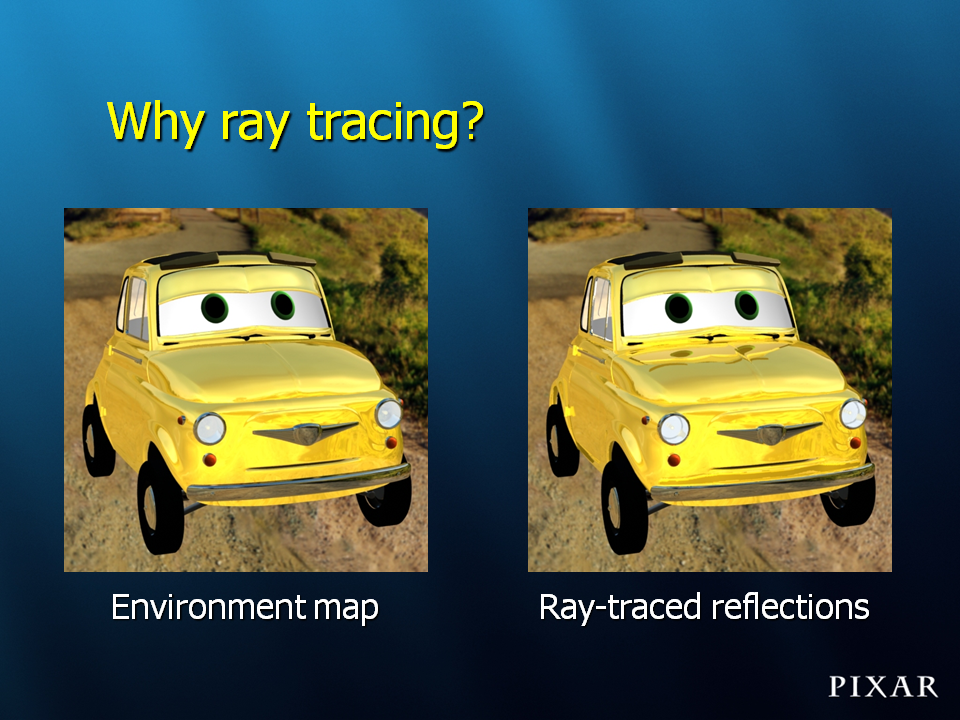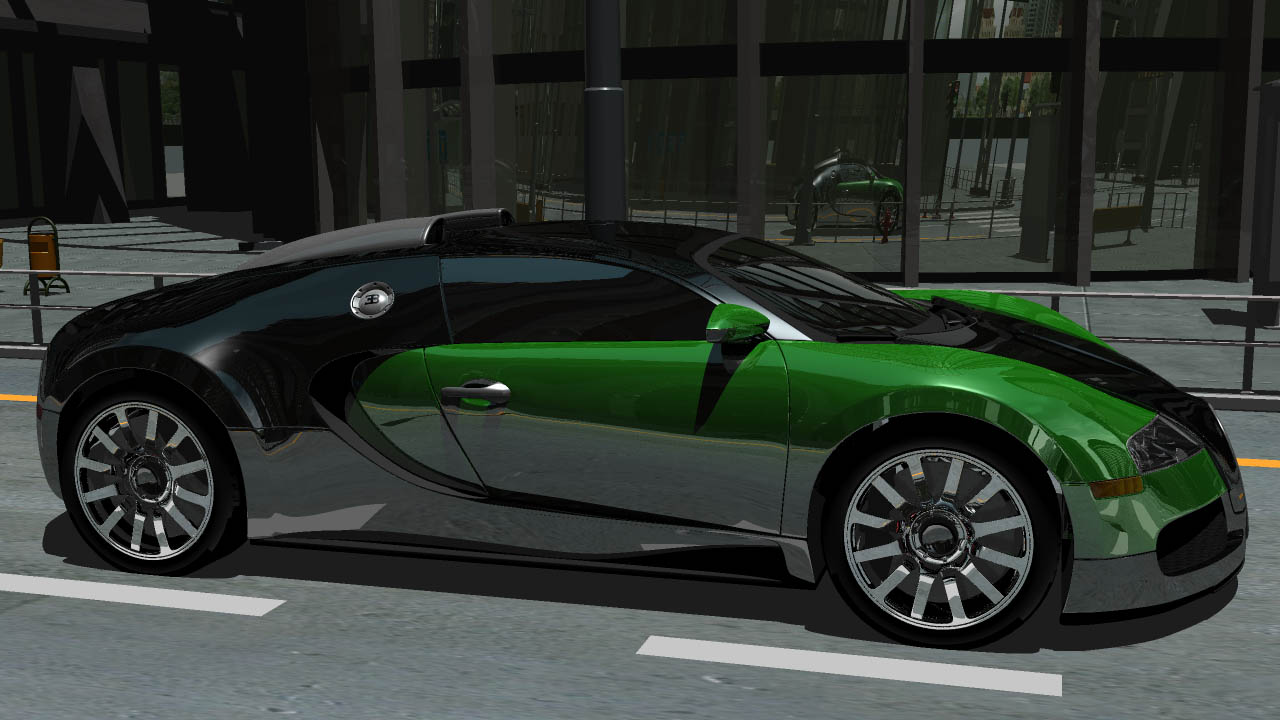When Will Ray Tracing Replace Rasterization?
The Advantages Of Ray Tracing
As we've just seen, one of the main advantages of ray tracing is its elegance. The algorithm uses only one basic primitive object to reproduce effects that often require a lot of ingenuity and hard work to simulate with a standard rasterization algorithm.
Reflections are one area where ray tracing excels. Currently, with the 3D engines used by modern games, reflections are calculated from an environment map. This technique gives a good approximation of the reflections located "at infinity" and in the environment, as the name indicates, but for close objects, the approach shows its limitations.
Developers of auto racing games, in particular, have developed tricks for simulating near reflections, by using dynamic cube maps. The camera is placed at the level of the player's car and a rendering is drawn in the main directions. The rendering is then stored in a cube map used to draw the reflections.
But dynamic cube maps also have limitations, too. It is computationally expensive to produce several renderings, and so to limit the performance hit, the cube map isn't recalculated as often as the main rendering. This can result in a slight latency in the reflections. To limit the impact on the fill rate, the rendering is also done at a lower resolution, which can create pixelation in the reflections. Finally, the technique is often limited to the player's car, with the others using a simple (spherical) environment map.
With ray tracing, reflections are perfectly managed, without complicated algorithms, and everything is handled directly by the rendering algorithm. Another advantage is that interreflections, such as the reflection of a side-view mirror on the car body, are extremely difficult to reproduce using rasterization and are handled in exactly the same way as any other reflection.
Get Tom's Hardware's best news and in-depth reviews, straight to your inbox.
Current page: The Advantages Of Ray Tracing
Prev Page The Basic Concepts Next Page Other Advantages Of Ray Tracing-
IzzyCraft Greed? You give an inch they take a mile? Very pessimistic conclusion although it helps drive the industry so hard to really complain. ;)Reply -
Ramar I'm definitely the kind of person that would prefer to lose some performance in exchange for elegance and perfection. The eye can tell when something is done cheaply in a render. I've made this argument that quite often we find computationally cheap methods of doing something in a game, and after time it seems to me that we've got a 400 horsepower muscle car that, on close inspection, is held together with duct tape and dreams. I'd much rather have a V6 sedan that's spotless and responds properly.Reply
Okay, well in real life, the Half Life 2 buggy would be a lot cooler to drive around than a Jetta, but you get the analogy. -
zodiacfml i still like the simplicity of ray tracing and how close it is to physics/science. it is just how it works, bounce light to everything.Reply
there are a lot of diminishing returns i can see in the future, some are, how complex can rasterization can get? what is the diminishing returns for image resolution especially on the desktop/living room?
ray tracing has a lot of room for optimization.
for years to come, indeed, raster is good for what is possible in hardware. look further ahead,more than 5 years, we'll have hardware fast enough and efficient algorithm for ray tracing. not to mention the big cpu companies, amd & intel, who will push this and earn everyones money. -
stray_gator aargh. start typing, then sign in to find your first words posted.Reply
Anyway, what I liked about this article is its being under the hood, but not related to a new product, announcement or such.
"deep tech" articles accompanying product launches tend inevitably to follow the lines of press kits, PR slides, etc.
Articles like this, while take longer to research, are exactly that - they are researched rather than detailing "company X implemented techniques Y and Z in their new product, which works this way, benefits performance that way and is really cool.". it gives an independent, comprehensive view of the subject, and gives the reader real understanding in the field. -
enewmen The ray-tracing code on the business card was way cool. I was hoping (real-time)ray-tracing and photo-realistic rendering will come with DX11 and GPGPU offloading - this seems completely unrealistic.Reply
I still never read of any dedicated ray-tracing hardware, at any price. It seems the better we understand ray-tracing and it's limitations, the more cloudy the future becomes. -
LORD_ORION Ray tracing will inevtiably replace rasterization. It will just flat out look better to the human perception, when in motion, than pure rasterization, and that is all that is required.Reply
Heh... this article brought to you by Nvidia. -
annymmo Hopefully GPGPU (OpenCL)Reply
will make raytracing possible.
(Together with a huge number of processing cores per graphic card and an advanced raytracing algorithm.)
-
Inneandar nice article.Reply
I wouldn't mind having just a little bit more technical depth, but I'd be glad to seem more like this on Tom's.


